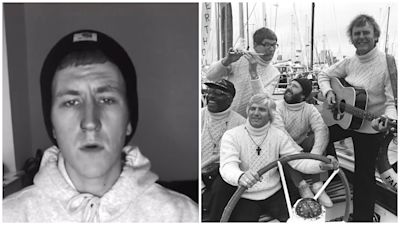Why are ancient sea shanties taking TikTok by storm?

Video report by ITV News Wales & West of England Correspondent Rupert Evelyn
Every generation has its soundtrack and the TikTok era now has the hum of sea shanties in the background.
Historically sung to boost the morale of fisherman, these folk songs are finding a new generation of devotees on social media.
They are undeniably catchy and aided by the collaboratively nature of TikTok, the songs have become a hit with modern youngsters.
Singers, professional and amateur, can join up on TikTok to harmonise on ancient sea shanties.
The man who started the craze on the social media platform is Scottish singer Nathan Evans after he uploaded a shanty called The Scotsman, following it up with his version of The Wellerman.
It seems somewhat surprising that a 19th century song about waiting for tea supplies, sugar and rum sent by the Australian whaling company, Weller Brothers, is taking TikTok by storm but the following is growing.
In a time when people are distanced from one another, maybe it should not surprise that a genre of music that brings people together is growing in popularity once more.
Numerous people have joined to add bass harmony, additional vocals and plenty more to Evans' original version, as it is spread far and wide.
It is all, frankly, quite quaint and enjoyable compared to some of the more negative aspects of social media in society today.
This is not the first time sea shanties have enjoyed a resurgence in recent times; Cornish group Fisherman's Friends reached No 9 in the charts back in 2010 and even had a feature film made about them.
What is a sea shanty?
The origin of the ditties stems from as far back as the 16th century, as those working out at sea sang them while carrying out laborious tasks.
The lyrics reflected the experiences of those working on the boats and ships, with some songs including the instructions to the tasks they were carrying out.
However, the beat of the song was always more important than the words, due to the fact they were there to encourage people during physical exercise.
In order to boost the muscle power on board boats, the rhythm of the songs would help the workers work in harmony, as the pulled together.
Additionally, the songs would build team spirit as they would also be sung during social events onboard.